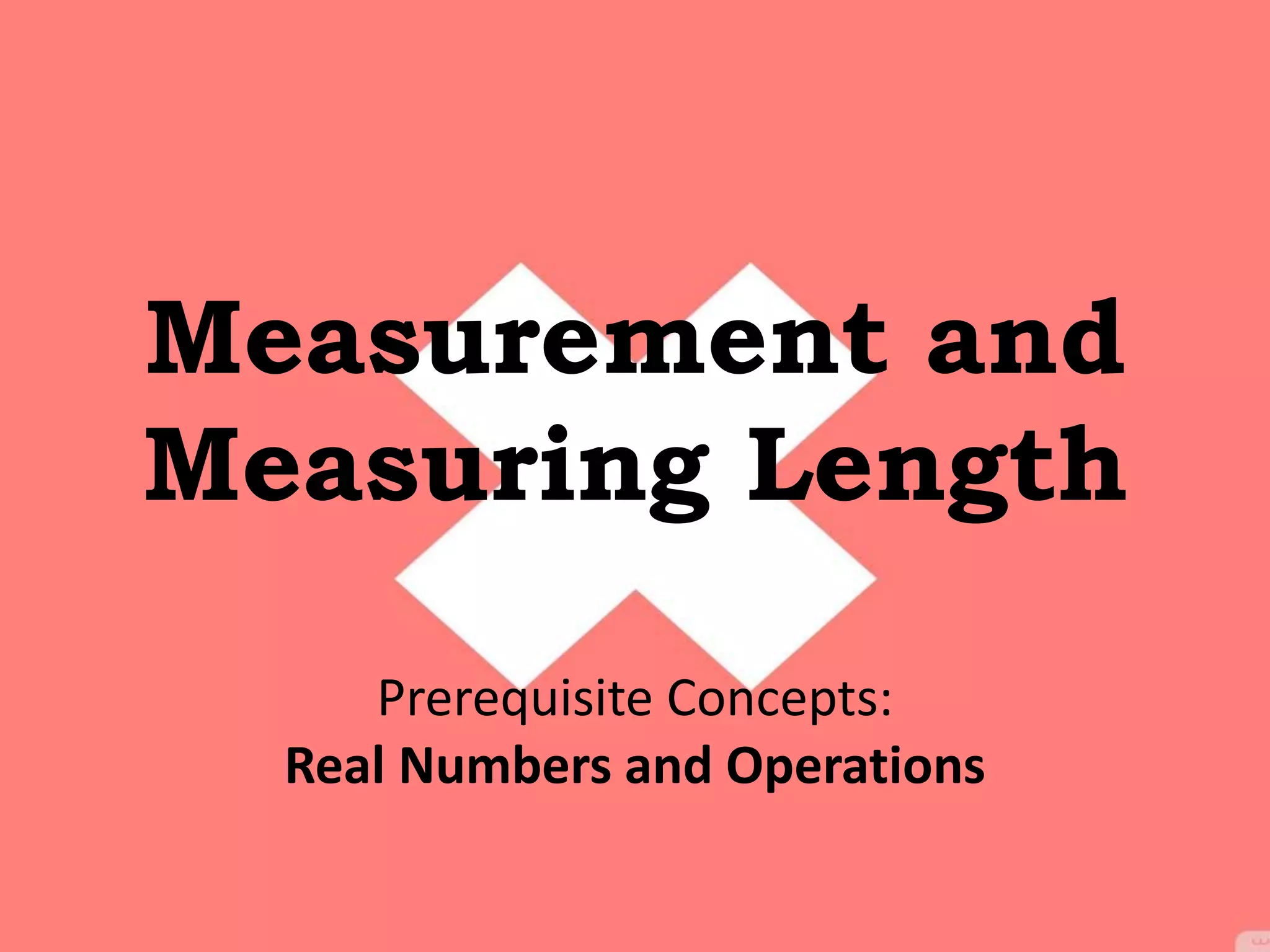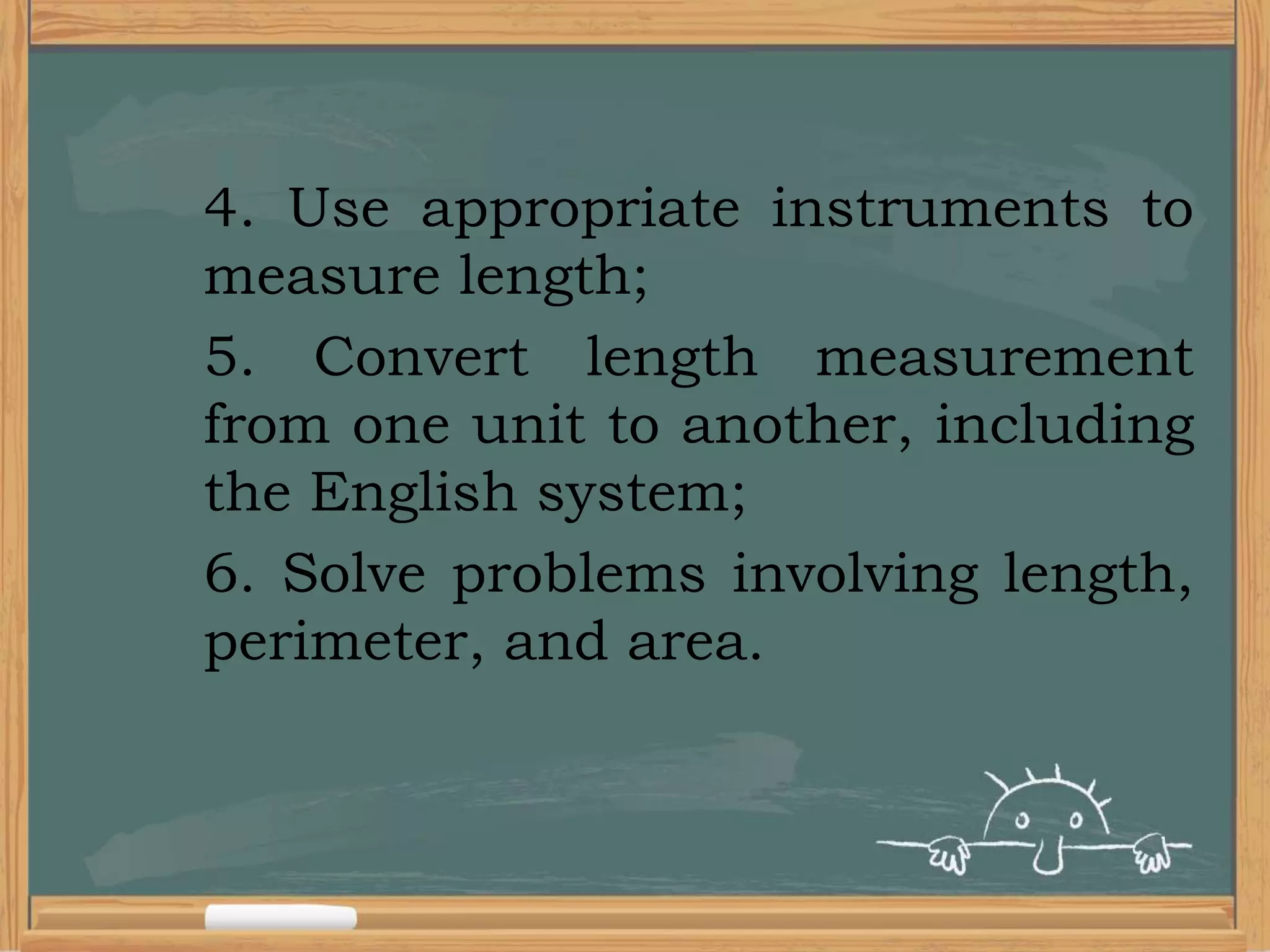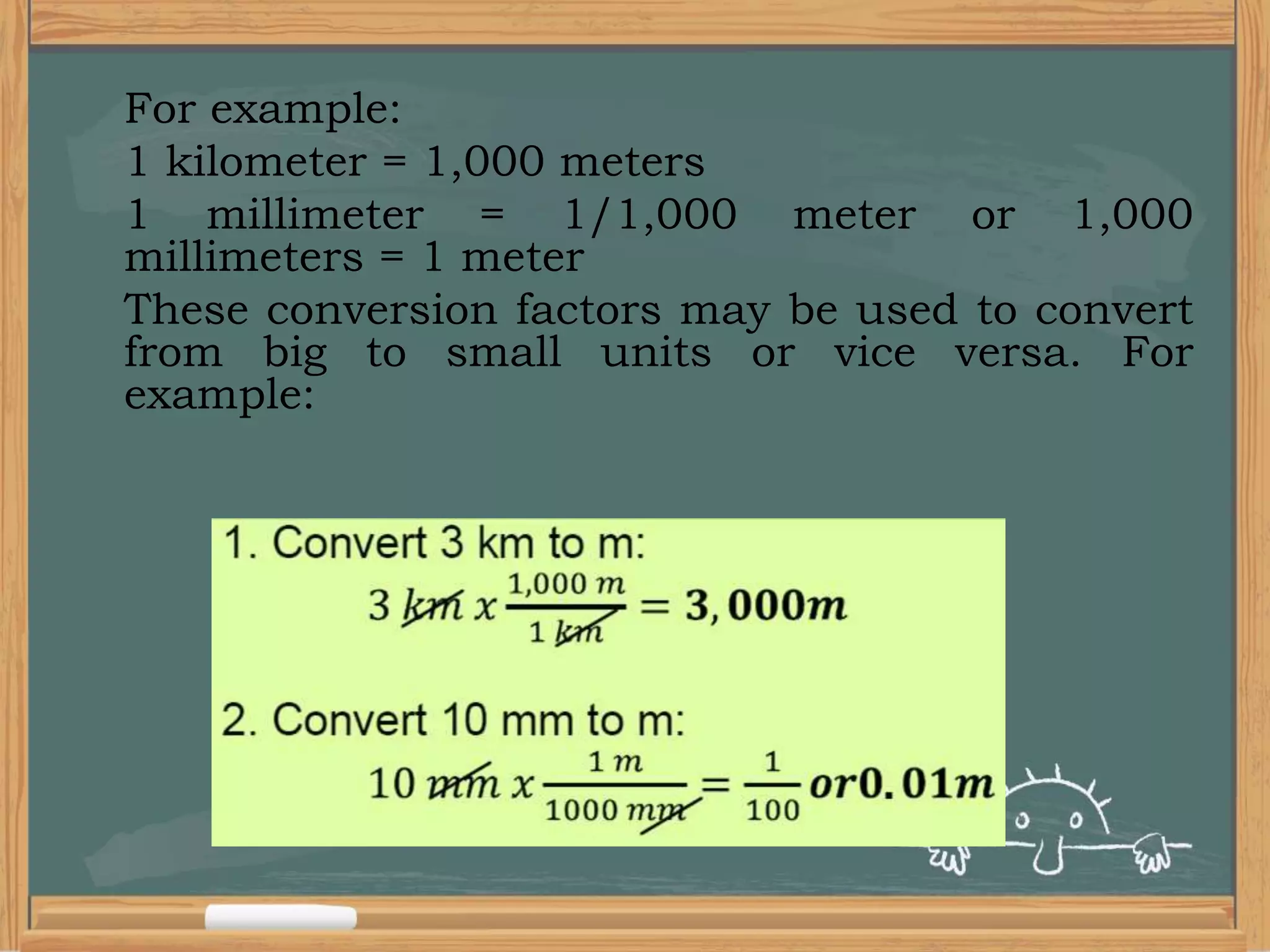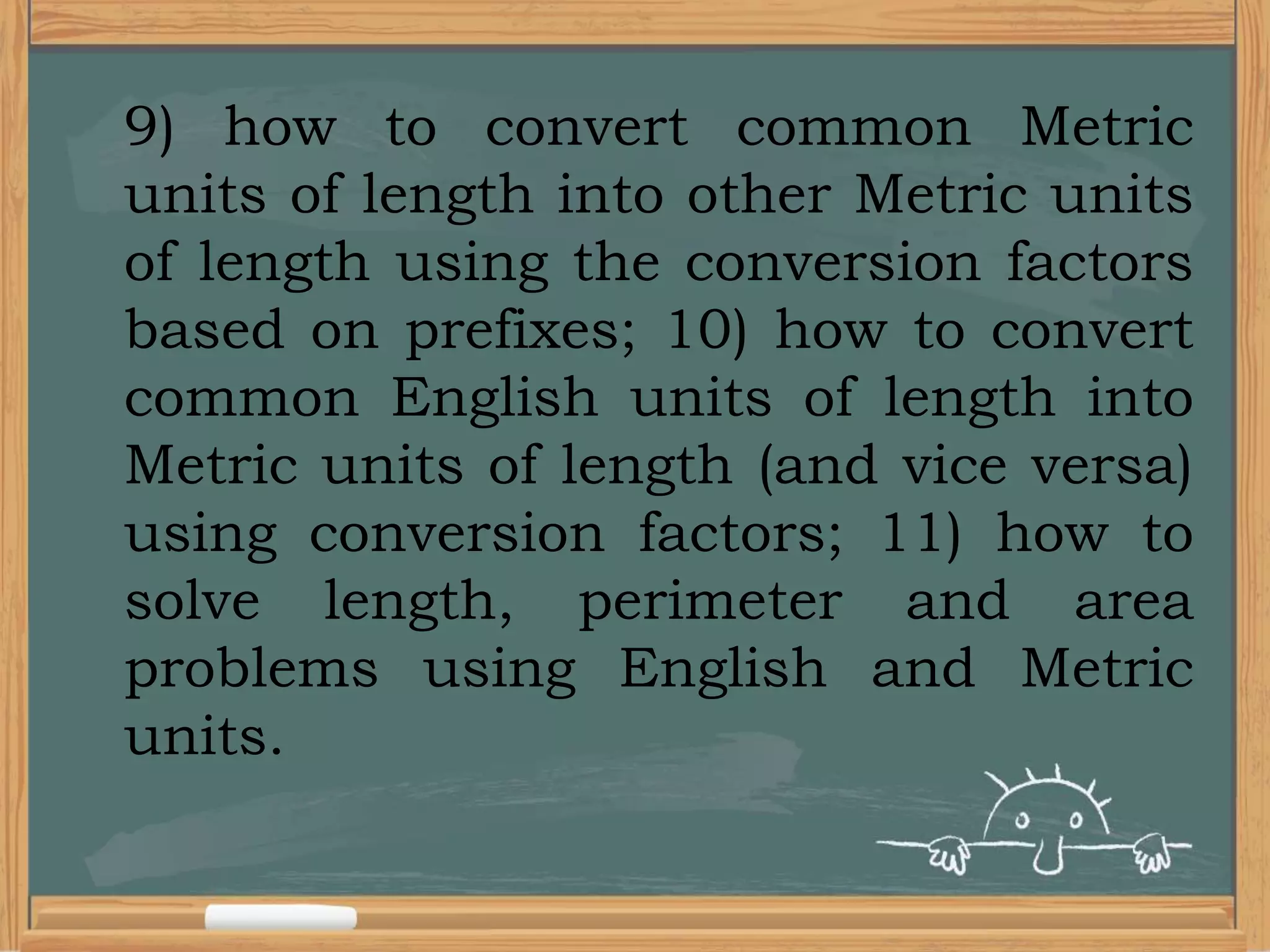This lesson covers measurement concepts in both English and metric systems, focusing on measuring length and conversion between units. It explores historical development of measurement from ancient body-based units to modern systems, promoting skills in estimation and accuracy with measuring tools. Students will learn to differentiate appropriate units for various measurements and solve practical problems involving length, perimeter, and area.









































